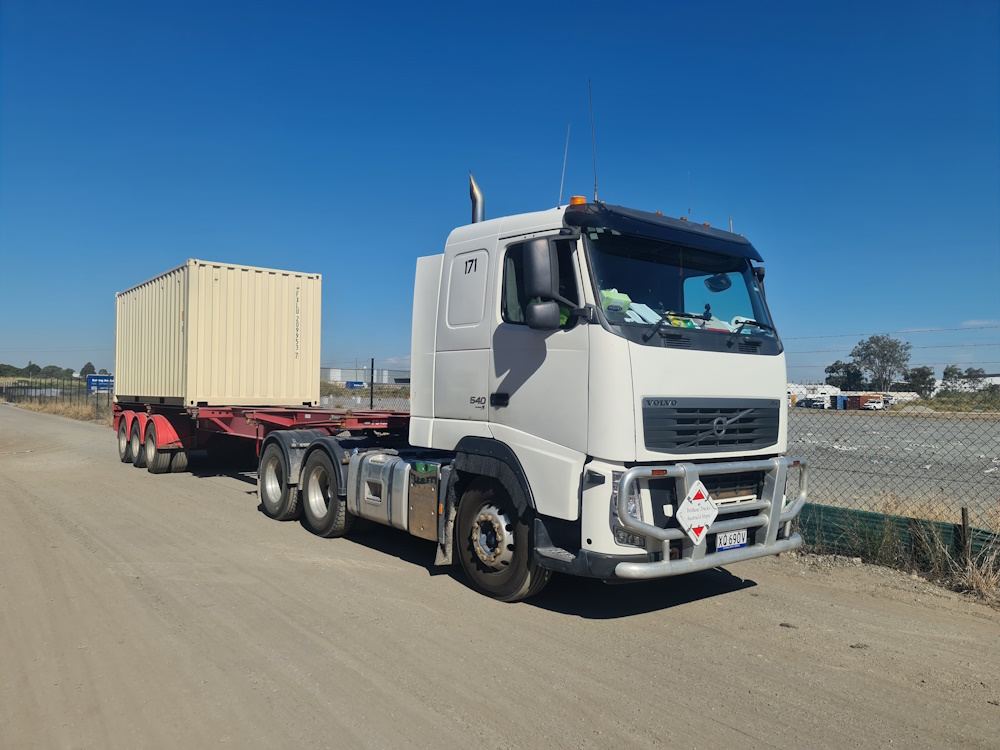Transporting Your Shipping Container: Navigate the World of Container Trucks


Uploaded on Tue Aug 22
Shipping containers have transformed from pure naval shipment boxes into marvels of modular construction. They offer a myriad array of applications, from storage solutions to bespoke housing structures. So, you have planned to purchase a shipping container online. The next step involves understanding the delivery methods, mainly focused on moving the empty containers to the customer's location.
There is a plethora of truck types available for transporting shipping containers. Each type aims to cater to the specifics of container size, client requirements, and location constraints. This blog post guides you through the different types of shipping container trucks and helps you decide which option is best suited to your needs.
1) Swing Lift Truck:
Also known as Sideloader, a Swing Lift Truck offers an extremely convenient way of handling 20-foot and 40-foot containers (although they are much more common for 40ft containers). As the name suggests, it lifts the containers using crane arms (or stabilisers) that swing to the side.
But remember that the Swing Lift Truck operator can only offload on the driver's side. This mechanical limitation is something you should consider when planning to receive the container at your proposed site. It is best suited for locations where the container needs to be transported directly from the truck to the ground within the truck's reach, making it less suitable for placing the container on a raised platform or elevated areas, but perfectly useful for ground level placement.
2) Tilt Tray Truck:
One of the most common and well-known methods of delivering a shipping container is via a Tilt Tray Truck. Simple as it sounds, the truck has a tray that hydraulically tilts to offload the container gently onto the ground.
The tilt tray truck is an excellent choice due to its simplicity and efficiency, however, keep in mind its space requirements while unloading, which involves a certain level of restraint around the area (for a 20ft container, it's 20ft forward clearance).
3) Super Tilt Truck:
Let's say you have chosen a 40-foot container and discovered that your location is logistically challenging for a Swing Lift. In this scenario, a Super Tilt Truck maneuvers into action. As an evolved version of the Tilt Tray Truck, it is more powerful and can accommodate the extra length and weight of a 40-foot container.
Not only is this truck adept at handling larger containers, but it also has a superior hydraulic system that allows a steeper tilt, making it an idle choice when it comes to compact delivery sites.
4) Crane Truck:
These incredibly versatile machines are not as popular for container deliveries due to their cost, but they are essential when the delivery location has specific hurdles about which the other trucks may not negotiate well. Crane trucks are suitable for maneuvering containers over obstacles and placing them into tight spots and top of each other.
However, it's important to note that due to weight limitations, crane trucks can only transport empty containers, which means you would have to load your goods only after the container is placed at your preferred site.
5) Trailer:
Situations arise where clients need multiple containers delivered at the same time. This is where a trailer becomes particularly valuable, effectively fulfilling a two-in-one function. A trailer, equipped with a tilt tray, can deliver two containers simultaneously, thereby saving significant time and reducing transportation costs.
However, strategically planning to unload and place two containers poses quite a challenge. So, it's safe to say that this option is particularly useful for large, open spaces.
6) Flat Top Truck:
A Flat Top Truck is used when neither of the tilting mechanisms nor a swing lift can be used due to specific factors of the delivery site or route. It essentially plops the container on a flat-top trailer.
The main catch here is that after arrival, the container must be unloaded via a crane or forklift organised by the client, which sometimes might be trouble worth the trouble, but then again, every container journey is distinct.
In conclusion, it's essential to understand that there are many types of truck options to consider when planning to get your shipping container delivered. Do keep in mind that the chosen method not only needs to justify your container size but also the exact destination requirements. Each truck type is designed to cater to a specific need, and understanding them will help ensure a successful delivery of your much-awaited online shipping container.




